
An Endodontist is a dentist who has undergone a minimum of two years of extra postgraduate training. This specialized training allows an Endodontist to:
1. Deal with diseases of the dental pulp and supporting structures
2. Diagnose facial pain and related problems
Your general dentist sometimes refers patients for a consultation when the diagnosis is complicated or when treatment is more difficult than normal. Aside from providing treatment, the role of an Endodontist is also that of an educator. It is important that patients understand why they require treatment, what treatment involves, and what they can do to ensure the best possible outcome. A properly informed patient has the best chance of achieving the optimal result.
Endodontics is a specialty of dentistry that involves diagnosis and treatment of diseases of the dental pulp and its supporting structures. Endodontists are dentists with special post-graduate training in this field. Endodontists are also experienced at finding the cause of oral and facial pain that may be difficult to diagnose. Although general dentists can perform endodontic treatment, patients are often referred to an Endodontist when the case is complicated or more difficult than usual.
In order to understand endodontic treatment, it helps to know something about the anatomy of a tooth. Teeth have several layers. The outside layer of the tooth is composed of a hard layer called enamel. Enamel is supported by an inner layer called dentin, which has at its center a soft tissue known as the pulp.
The pulp contains blood vessels, nerves, and connective tissue that are responsible for forming the surrounding dentin and enamel during tooth development. The pulp receives its nourishment supply from vessels which enter the end of the root. Although the pulp is important during development of the tooth, it is not necessary for function of the tooth. The tooth continues to be nourished by the tissues surrounding it even after the pulp is removed.
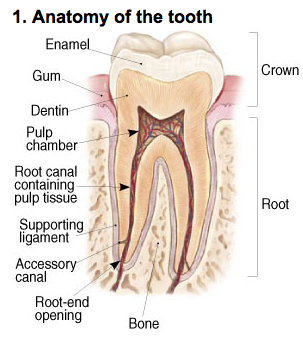
Endodontic treatment is necessary when the pulp becomes inflamed or infected. The most common reasons for inflammation or infection are deep cavities (caries), repeated dental procedures, cracks, or chips. Trauma can also cause inflammation and often shows up as discoloration of the tooth. If pulp inflammation or infection is left untreated, it can cause pain or lead to an abscess.
Indications for treatment include prolonged sensitivity to heat or cold, discoloration of the tooth, or swelling and tenderness of the tooth or adjacent gums. Sometimes there are no symptoms.
Most treatments can be completed in one appointment, but it is not uncommon to need a second visit to complete treatment. Occasionally, three appointments may be needed; however, there is no additional financial investment required if multiple visits are needed. In any case, it depends on the degree of infection/inflammation and degree of treatment difficulty.
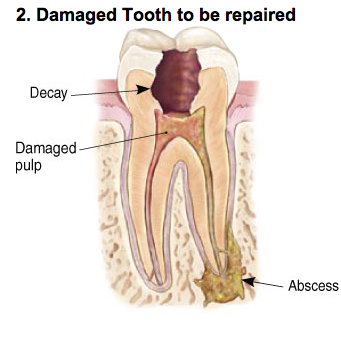
Endodontic therapy (root canal) is not a cure, but rather a highly successful therapy. It is simply the very best treatment dentistry has to offer to help patients maintain their teeth once the nerve and blood supply become diseased. Studies have shown that under optimal conditions success rates may be as high as 97-98%. However, this means that even with our best efforts, the endodontic therapy may be unsuccessful and require conventional retreatment, surgical retreatment, or extraction. Therefore, endodontic therapy cannot be guaranteed. We will discuss with you the chances of success before any endodontic procedure to help you make an informed decision. If a root canal or endodontic therapy is unsuccessful, you have other options.
During endodontic therapy, Dr. Budig removes the inflamed or infected pulp, carefully cleans and shapes the canal system and then seals the prepared space. Once treatment is completed, you will be instructed to return to your dentist for a permanent restoration. Restoration of the tooth is an important part of treatment because it seals the cleaned canals from the oral environment, helps protect the tooth from fracture, and restores it to function.
Once endodontic therapy is completed, your tooth should be examined periodically, usually every 6 – 12 months. This allows us to make sure the tooth has healed or is healing properly. You will be sent a notice in the mail when we feel it is appropriate to re-evaluate the area. Since an abscess may take 2 years to heal, our office will re-evaluate the tooth for at least 2 years.
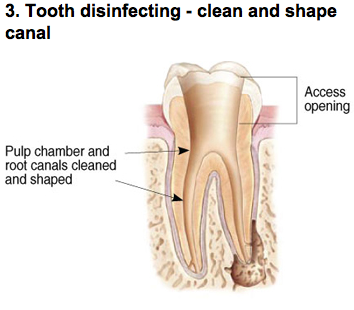
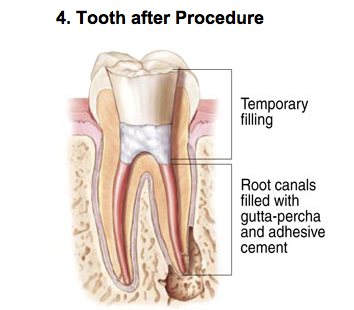
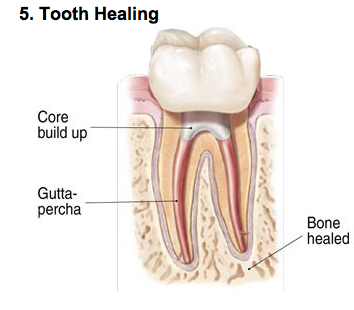
Toothache is the main reason for patients seeking treatment. Fortunately, modern anesthetics can make the procedure pain free in most cases. Seeking treatment early makes the procedure more comfortable, so don’t wait. When caught early, treatment should feel no different than having a regular filling. For the first few days after treatment, there may be some sensitivity to biting pressure, especially if there was pain or infection before the procedure. Sometimes over-the-counter anti-inflammatory medications like Advil are recommended for a day or two. Dr. Budig can prescribe other medications if they are required.
When your endodontic therapy has been completed, a record of your treatment will be sent to your restorative dentist. You should contact your restorative dentist’s office for a follow-up restoration within a few weeks of completion at our office. Your restorative dentist will decide on what type of restoration is necessary to protect your tooth. It is rare for endodontic patients to experience complications after routine endodontic treatment or microsurgery. If a problem does occur, however, we are available at all times to respond.